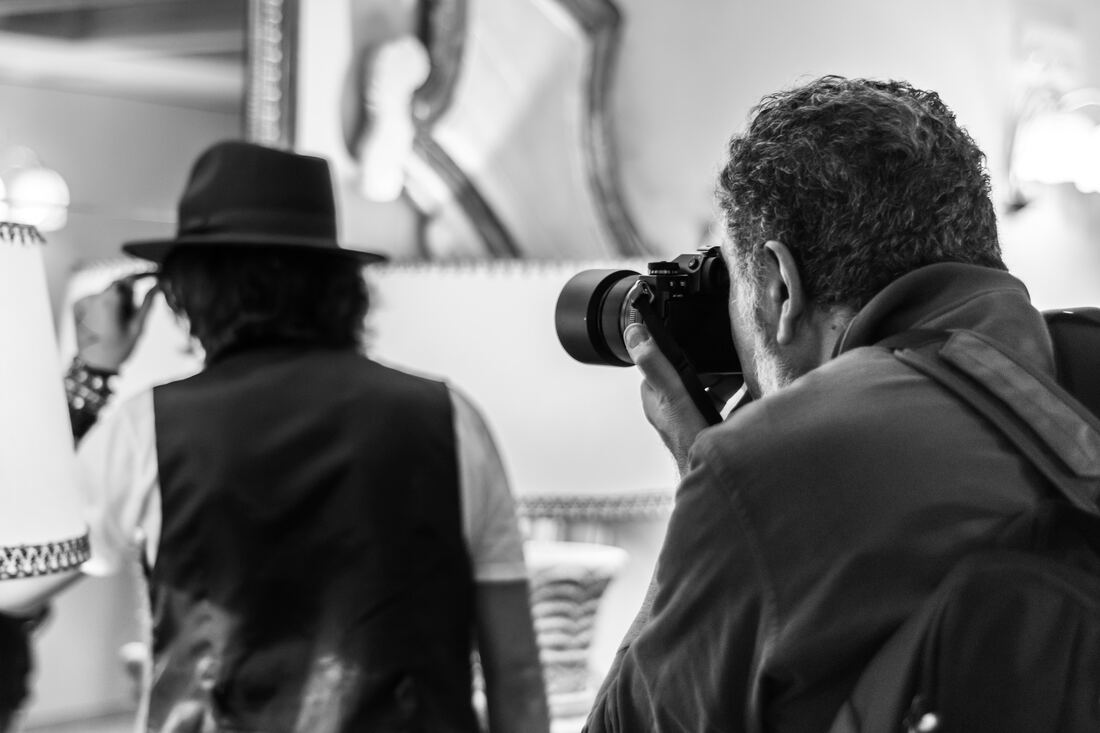|
You don’t often hear or read about hearing loss in mainstream media. Have you seen any celebrities on TV, in a movie, or a musician wearing a hearing aid? Some advisors encourage them to hide their hearing loss, even though it is general knowledge that many musicians lose their hearing after performing for a long time.
Recently, there has been a rise in actors, musicians, and other notable people who have opened up about their hearing loss. The following individuals have been outspoken about their hearing problems, which helps destigmatize the condition. Notable Actors with Hearing Problems Halle Berry Halle Berry lost hearing in one ear after a domestic violence incident caused by a blow to the head by a former boyfriend. A traumatic brain injury (TBI), like a concussion, can cause permanent damage to the ear and auditory system that connects to the brain. Barry, a native of Cleveland, OH, was a pageant queen and a successful actress in TV and movies. She won an Academy Award for Best Actress in a Leading Role in “Monster’s Ball” (2002) and an Emmy for Outstanding Lead Actress in “Introducing Dorothy Dandridge” (2000). Stephen Colbert As a child, Stephen Colbert had surgery to repair a perforated eardrum. The surgery caused single-sided deafness (SSD). He has joked about his ear by saying the surgeons “scooped it all out with a melon baller” and calls his external ear “a prop.” He’s gone on to host The Late Show with Stephen Colbert and received Peabody and Emmy Awards for his past shows, “The Daily Show,” “The Colbert Report,” and specials on Showtime. Whoopie Goldberg Whoopie Goldberg is an award-winning comedian and actress who also happens to wear hearing aids. She lost her hearing after many years of listening to loud music, which caused damage to her eardrum. Before she became an actress and comedian, she worked in a funeral parlor and as a bricklayer. She won an Academy Award for Best Actress in a Supporting Role for 1991’s “Ghost” and was an Oscar nominee for Best Actress in a Leading Role for 1986’s “The Color Purple.” Holly Hunter Actress Holly Hunter became deaf in her left ear after a case of mumps. At age 9, she started learning how to play the piano. Her piano skills came in handy when she played the role of a mute woman living in the 1850s in the movie “The Piano.” Her performance in this film helped her win an Oscar for Best Actress in 1993. Hunter is well known for her attention to detail, which she refined while listening to others attentively. Throughout her acting career, she received 91 nominations for various awards and won 44 times. She recently played Rhea Jarrell in the HBO series “Succession.” Steven Martin Actor, comedian, singer, banjo player, dancer, and writer Steve Martin revealed in an interview that he’s been struggling with tinnitus for several years. He said the cause of damage to his ear was from a gunfire scene from The Three Amigos. The noise-induced hearing loss (NIHL) was likely caused by listening to loud music and performing live concerts with 28,000 screaming fans. He’s become habituated with tinnitus, stating that it “becomes easier to live with. It becomes your natural background noise.” Marlee Matlin Marlee Matlin’s hearing healthcare professionals are uncertain if a deformed cochlea or infection from childhood caused her deafness when she was 18 months old. That didn’t stop her from becoming history’s best-known and the most prolific actor. When she was seven, Matlin played Dorothy in “The Wizard of Oz” for a children’s theater company. Fifteen years later, she won the Academy Award for Best Actress in 1986’s “Children of a Lesser God.” She’s had a total of 14 acting nominations and won three times. Matlin has published “Deaf Child Crossing” - a series of children’s books - and a memoir called “I’ll Scream Later.” She is also the spokesperson for the largest provider of TV closed captioning. Robert Redford Most ear infections will gradually go away on their own and won’t lead to permanent hearing loss, but ear infections that remain untreated may cause permanent harm. It happened to Robert Redford in 2013 when filming “All is Lost.” He played a stranded sailor, and it required him to submerge his whole body in a water tank and get blasted with a water hose every day. An ear infection led to 60% of hearing loss in his left ear. Redford won an Oscar for Best Director for the 1981 film “Ordinary People.” He also starred in 1969’s “Butch Cassidy and the Sundance Kid,” 1973’s “The Way We Were”, and 1973’s “The Sting”. Are you or a loved one experiencing hearing loss or tinnitus? Contact Pure Sound Hearing for a complimentary hearing test and consultation. A common theme among horror films is the nerve-wracking soundtrack that instills panic in the audience. Watching a horror flick without the sound on loses some scary effects.
What makes the music and sound effects frighten people? If sounds are just waves of vibrations that travel through the air, why do we react with alarm? The Physiological Effects of Fear When we sense a dangerous situation, our evolutionary biology reacts to it as a survival tactic. It takes time to think, so when you are in harm’s way, it only takes seconds before you can react and get yourself to safety. In many cases, processing visual information takes longer. The brain reacts quicker when hearing sounds - offering an advantage in survival mode. When they become frightened, vertebrates, like humans, will react to harsh sounds and vocalizations that are out of the ordinary. An instant wave of anxiety or fear will overcome them. Why do nonlinear sounds feel alarming? The scream from an animal sounds like a grating, erratic noise that surpasses the abilities of the vocal cords. When hearing nonlinear sounds, humans may interpret noise as atypical and life-threatening. Nonlinear sounds, via artificial means (TV and movies), can recreate that same fear humans feel when they see or hear something frightening. Fear the Soundtrack Everyone remembers the infamous shower scene from Psycho. It’s terrifying. It’s a lot less scary to watch the scene with the sound muted. The high-pitched screaming and music animates the fear into you while viewing the movie from the couch. UCLA evolutionary biologist Daniel Blumstein conducted a study examining emotional reactions to two styles of music Test subjects were to listen to emotionally neutral music scores and scores that included nonlinear properties. Music with nonlinear elements brought out emotional responses and negative feelings in test subjects. This response is contingent upon human anatomy and physiology. Scary movies often use nonlinear, cacophonous sounds to get a rise out of audiences. If you are missing out on movie soundtracks of your favorite genre, contact Pure Sound Hearing for a complimentary hearing test and consultation. Modern digital hearing aids are complex devices with so much advanced technology. If you want an easier and more accessible time with streaming TV shows and movies to your hearing aids, this blog will explain how.
Bluetooth® is the latest type of wireless technology used with smartphones, stereo systems (in your home and your car), and other digital devices that can connect to your hearing aids. It makes hearing everyday sounds and engaging in conversation simpler. Why should you use Bluetooth® hearing aids? Hearing aids that feature Bluetooth® are getting more and more popular. Hearing aids with Bluetooth® compatibility are meaningful advancements for people with hearing loss. Sounds from a wireless signal for your music, TV, smartphone, or laptop can transfer to a Bluetooth® hearing aid. That means no more additional wires are needed. You can hear it in just one ear or both. Sound quality, clarity, and battery life also improved with Bluetooth®. Modern Bluetooth® hearing aids are widely available in discreet/nearly invisible sizes or larger and colorful ones if you want to show them off. Bluetooth® hearing aids let the user manually change the volume level that goes through the hearing aid or automate and change channels in another environment. For example, if you go into a noisy restaurant, your hearing aids can switch to a pre-programmed channel that your hearing instrument specialist created so you can hear the person you are with at an optimal level. Bluetooth® hearing aids and Your TV Once you get the basics down, linking your hearing aids to your TV using Bluetooth® is easy. Here are the 5-easy steps:
If you notice any issues with the connection, look through the support documentation for your hearing aids or contact your hearing instrument specialist for assistance. After you connect your hearing aids to your TV, sit back, relax, and enjoy hearing your favorite movies, shows, or sports. Common Problems that may Arise
If there are still problems that you are facing with this, contact Pure Sound Hearing. We’ll help you figure out a solution. |
Categories
All
|
-
products
- Rexton Emerald M 8C RIC
- Rexton inoX CIC 8C
- Rexton Mosaic M 8C BTE
- Rexton Mosaic P 8C BTE
- Rexton Stellar RIC 8C
- Rexton Sterling 8C CIC / IIC
- Rexton Sterling 8C ITE / ITC
- Rexton Emerald XS 8C RIC
- Rexton Emerald S 8C RIC
- Signia Active Pro
- Signia CROS AX
- Signia CROS Hearing Solutions
- Signia Insio Charge&Go AX
- Signia Insio Nx IIC/CIC
- Signia Insio Nx ITC/ITE
- Signia Intuis 3 Family
- Signia Motion Charge&Go X
- Signia Motion 13 Nx/Motion 13 P Nx
- Signia Prompt
- Signia Pure Charge&Go AX & T AX
- Signia Pure 312 AX
- Signia Pure 10 Nx
- Signia Pure 13 BT
- Signia Pure 13 Nx
- Signia Silk X
- Signia Styletto AX
- Signia Styletto X
- SERVICES >
- about
- blog
- Insurance
- contact
|
© 2023 Pure Sound Hearing Aids. All Rights Reserved.
|
Proudly powered by Weebly
-
products
- Rexton Emerald M 8C RIC
- Rexton inoX CIC 8C
- Rexton Mosaic M 8C BTE
- Rexton Mosaic P 8C BTE
- Rexton Stellar RIC 8C
- Rexton Sterling 8C CIC / IIC
- Rexton Sterling 8C ITE / ITC
- Rexton Emerald XS 8C RIC
- Rexton Emerald S 8C RIC
- Signia Active Pro
- Signia CROS AX
- Signia CROS Hearing Solutions
- Signia Insio Charge&Go AX
- Signia Insio Nx IIC/CIC
- Signia Insio Nx ITC/ITE
- Signia Intuis 3 Family
- Signia Motion Charge&Go X
- Signia Motion 13 Nx/Motion 13 P Nx
- Signia Prompt
- Signia Pure Charge&Go AX & T AX
- Signia Pure 312 AX
- Signia Pure 10 Nx
- Signia Pure 13 BT
- Signia Pure 13 Nx
- Signia Silk X
- Signia Styletto AX
- Signia Styletto X
- SERVICES >
- about
- blog
- Insurance
- contact




 RSS Feed
RSS Feed